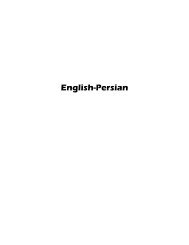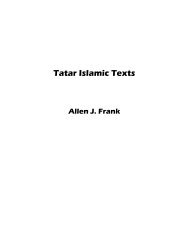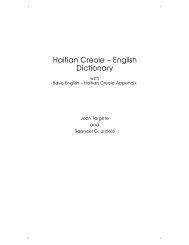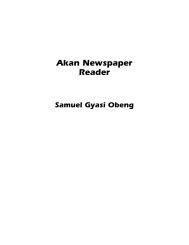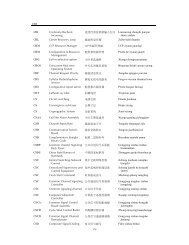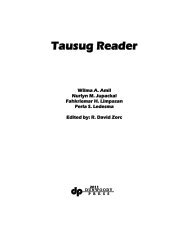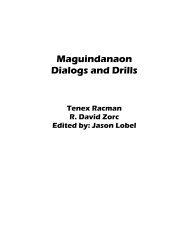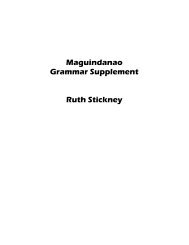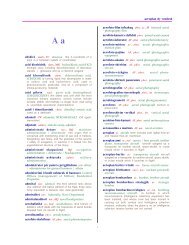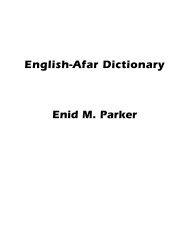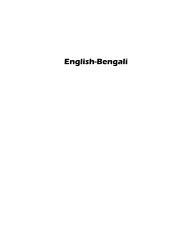Zulu Newspaper Reader - Dunwoody Press
Zulu Newspaper Reader - Dunwoody Press
Zulu Newspaper Reader - Dunwoody Press
Create successful ePaper yourself
Turn your PDF publications into a flip-book with our unique Google optimized e-Paper software.
A comparison of the above forms reveals that the A and B forms<br />
belong to one tense – the one we call ‘past tense, disjoint and<br />
conjoint 2 ,’ respectively – while the C forms belong to another – the<br />
one that we call ‘stative,’ in which there is no distinction between<br />
disjoint and conjoint forms.<br />
2.2.2. Past + Perfect/Stative<br />
In line with the discussion above, and our use of the term ‘remote<br />
past’ for P-M’s ‘past,’ we make a distinction between a ‘remote past<br />
past’ and a ‘remote past stative.’<br />
2.2.3. Perfect + Perfect/Stative<br />
In line with our analysis of the “perfect/stative,” we label these ‘past<br />
past’ and ‘past stative.’<br />
2.2.4. Past Tense Negative<br />
P-M say (p.271): “Two formatives are used to indicate the negative<br />
past tense and these are the very ones which are used for the negative<br />
perfect.” In other words, there is no case for making a distinction<br />
between two different tenses. The fact of the matter is that in the<br />
positive, <strong>Zulu</strong> distinguishes a remote from a recent past, while in the<br />
negative, it does not. We thus label the negatives of both tenses as<br />
past negative.<br />
2.3. Additional Material on Conjunctions<br />
The use of conjunctions in <strong>Zulu</strong> can be fairly complex for non-native<br />
learners of the language. This is partially because of their varying<br />
significances and partially because of the way they affect (or do not<br />
affect) a following verb or copulative. Differences in the structure of<br />
<strong>Zulu</strong> and the structure of English can be problematic too. The<br />
conjunction may be embedded within a larger structure in which it is<br />
less easily recognizable. In some cases, there is an additional<br />
problem in that the conjunction is identical to another form from<br />
which it derives, which is not a conjunction. Cope (1984) is a useful<br />
reference for conjunctions.<br />
2 Loosely, disjoint forms are those where the verb is not syntactically<br />
closely linked to what follows, or where nothing follows, whereas conjoint<br />
forms are those in which the verb forms a syntactic unit with what follows.<br />
xxii



